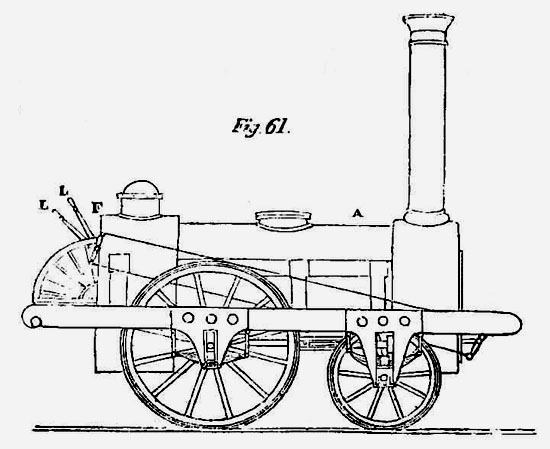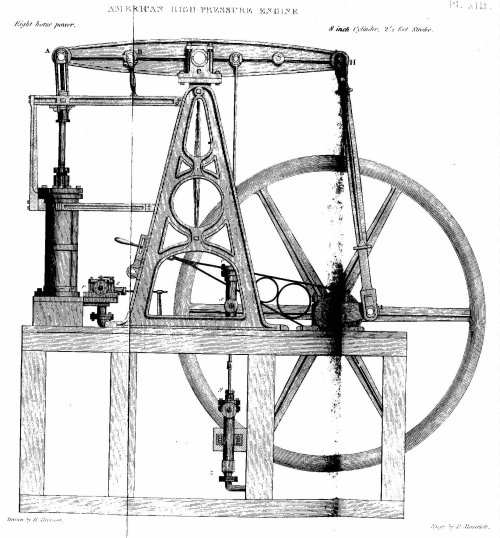High-pressure Steam Engines
Today, the first locomotive. The University of Houston's College of Engineering presents this series about the machines that make our civilization run, and the people whose ingenuity created them.
Children called the old steam locomotives "choo-choo trains." Choo-choo was the noise made by steam leaving the cylinders down by the wheels. If you've never seen it in real life, you've seen it in movies: A conductor shouts, "All aboard!," there's a great gush of steam around the wheels, and the train starts moving.
All this was the result of two great ideas that converged around 1800, after steam engines had been around for a hundred years -- the idea of running steam engines at high pressure and the idea of using them for transportation.
The first steam car was made by the French military engineer Nicholas Cugnot in 1769. Steam engines were huge two-story structures then; so it's not surprising that Cugnot's car was a big brute. It carried 4 people at about 2 mph. It was meant to pull field artillery, but it wasn't really practical.
In 1784 William Murdoch, who worked for Watt, used a Watt engine to produce a better car -- lighter and faster. The problem was that Watt didn't like the idea of using steam engines in vehicles. He patented the idea so he could put it on ice.
Watt didn't like high-pressure steam, either; and that's the other thing that was needed to make a vehicle. You see, the early steam power plants all depended on condensing steam in a vacuum -- they worked by sucking the piston in, more than by pushing it out. Low-pressure steam takes up space, and that made engines large. When the pressure was run up to 50 or 100 psi, the engines could be made a lot smaller. Watt wanted no part of that game, because high-pressure steam could be dangerous.
The improved boring and machining equipment of the late 18th century finally made high-pressure engines realistic. The Cornishman Richard Trevithick and the American Oliver Evans both made good high-pressure, non-condensing engines about 1802. They had small, well-machined cylinders, and they'd fit in a vehicle.
Trevithick and Evans both used their engines in steam cars -- without much success. But then Trevithick saw that steam could replace the horses that drew carts on England's rail system. He was clever in selling the idea. First, he made a successful locomotive in 1804. Then, in 1808, he built a little closed-circuit demonstration railroad in London -- like a carnival ride. The train -- called the Catch-me-who-can -- went 12 mph.
From then on, steam trains really caught on. The high-pressure steam engine opened up Western America. That familiar "choo-choo" is the sound of spent high-pressure steam. It's a sound that tells how two good ideas finally came together.
I'm John Lienhard, at the University of Houston, where we're interested in the way inventive minds work.
(Theme music)
This episode has been greatly revised as Episode 1572.

(From The Steam Engine Familiarly Explained, 1836)
A state-of-the-art locomotive in 1835

(From The Steam Engine Familiarly Explained, 1836)
An American high-pressure engine